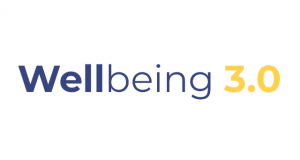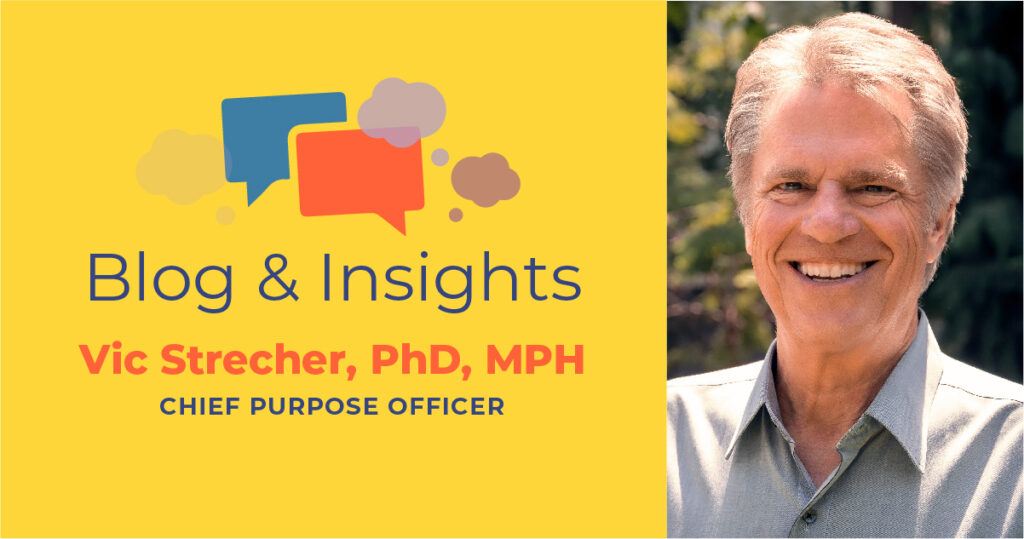

Some Thoughts on Engagement
A few months ago I was meeting with the well-being leader of a large convenience store chain. Our conversation turned to the subject of engagement with their digital health interventions. They were using a platform that monetarily incentivized use of the interventions. Clicking for points produced financial returns. I asked if the incentives influenced use. “Of course,” she replied. I then asked whether the interventions were changing the health behaviors they were hoping to improve. She thought for a second: “Not at all.”
Twenty years ago, I was leading a series of National Institutes of Health-funded studies designed to find the “active ingredients” of digital health communications. The promise of these digital interventions was big – with the possibility of reaching far more people at far lower cost than human-intensive interventions, with efficacy that was far greater than one-size-fits-all booklets, pamphlets, and videos.
The effectiveness of these interventions in changing behavior, however, seemed predicated on engagement. In other words, my colleagues and I assumed that regular use of these interventions – as in the dose-response of a medication — would be important to the process of change. We therefore examined many different ways of increasing use of these interventions – ways that included deeper content tailoring to increase relevance (it worked) and tailored push messaging (it also worked).
What’s also been shown to increase regular touches with a product is simply paying people. Financial incentives increase both initial participation and regular touches. I use the word “touches” on purpose, since the cursory click on a subject – what I’m calling a “touch” – might not be actual engagement. For the purposes of digital health interventions, I view engagement as a cognitive connection to the content and process of the intervention. Not as strong as a marital engagement but stronger than an engagement to have lunch.
At my own work setting (the University of Michigan), we are once again paid a large financial incentive to take a vendor’s traditional health risk assessment. I have to say that I only took the assessment because I was paid to do so. A few years ago this incentive was removed, which as expected, drastically reduced the number of employees taking the HRA. The incentive, however, likely cost the University millions of dollars a year, effectively destroying any hope for a financial return on the investment in this programming.
Is there another way?
Newer forms of therapy, often called “third-wave therapies” such as Motivational Interviewing, Acceptance and Commitment Therapy, and Dialectic Behavior Therapy have taught us that understanding and appealing to a person’s core values, roles, identity, and purpose can produce powerful cognitive and emotional commitment to change. Does this focus entirely replace more traditional incentives to touch an intervention – probably not. It may in fact be best to find ways of combining intrinsically-driven content with incentives.
We recently introduced our “Summer of Purpose” campaign, designed to incent initial participation and use of our purpose-driven platform through a significant donation to feed the hungry. Research has shown that engaging in a socially responsive act not only motivates engagement, it’s also good for your health and well-being! We’re hoping that this act of giving is just as motivating as a coffee gift card or a pair of earbuds. We know that it’s better for your health and well-being.
At Kumanu, we’ve found that only 15% of people use our Purposeful well-being application for just one day and then stop altogether. Moreover, our retention rate for Purposeful in the first week is over twice the average of health and fitness apps. That said, we find that different people use Purposeful for different reasons. Some use it for the number days they need to address a problem (like quitting smoking or learning to meditate during a meeting), then stop once they feel they’re on top of the issue being addressed. They may then return to address another issue at another time. Still others use Purposefully on a regular basis, trying to bring their best selves to life, work, and community. In other words, for some people, Purposeful is an aspirin. For others it’s a vitamin.
As I hope I’ve explained, engagement is a very complex issue. It’s an issue I’ve personally studied for decades and come around to the conclusion that a single percentage describing engagement is almost always an oversimplification of reality. The real proof in the pudding is not how frequently a person “touches” an application, which can easily be manipulated by financial incentives. It’s whether people change their lives for the better, and we know that even this measure has different meanings for different people. At Kumanu, we want to be an aspirin and a vitamin!
About the Author

Vic Strecher, PhD, MPH
CEO and Chief Purpose Officer, Kumanu
Vic Strecher (PhD, MPH) is a leader and visionary in the fields of purpose and wellbeing, creating new solutions that operate at the intersection of the science of behavior change and advanced technology. In 1998, Vic created Health Media pioneering Web-based “digital health coaching.” Since January 2014, Vic has given keynote presentations about the role of purpose in life, energy, and willpower to over 1,500 organizations, providing him the opportunity to not only respond to the growing interests of the market, but to also continue to help shape it. In late 2015, Kumanu (formerly JOOL Health) was launched as a major paradigm shift in how individuals engage in the pursuit of purpose, meaning and wellbeing while offering organizations a more insightful means to support positive culture and behavior change.
